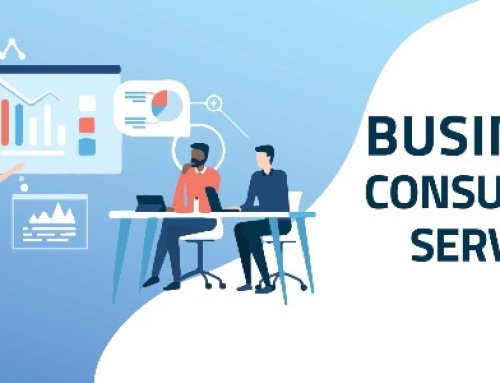A brand is the face of your company, and a well-known brand can be an enormous asset. But that same brand can become a liability if you don’t manage it properly. If you have ever watched the news or read a newspaper, then you know that brands are becoming more and more important with their marketing assets.
The reason for this has less to do with advertising budgets than with how consumers interact with brands every day on social media sites such as Facebook and Twitter.
This interaction can lead to both positive and negative situations for companies – which makes it crucial for businesses to understand how their brands are perceived by others.
Your brand is a marketing asset that you can leverage to strengthen your business.
Your brand is a marketing asset that you can leverage to strengthen your business. While it may seem like a simple concept, many companies don’t fully understand the value of their brand and how to leverage it effectively.
Here are three ways that understanding your brand better can help you grow:
- Your brand is the perception of the company in the minds of its customers. If they have positive feelings about what they think your company stands for, then they are more likely to buy from you and recommend others do so as well. This creates an excellent opportunity for word-of-mouth marketing as well as increased sales leads over time through repeat purchases/referrals by existing customers (or potential ones).
But if you don’t have the right strategy, your brand can turn into one of your greatest liabilities.
But if you don’t have the right strategy, your brand can turn into one of your greatest liabilities.
- If you’re not managing your brand properly, it can become a liability. For example, if a company doesn’t clearly define what its brand stands for or fails to protect that identity from competitors who want to dilute it by using similar messages and imagery (and there are plenty of examples), then its image may become less recognizable over time and less effective at attracting new customers or inspiring loyalty among existing ones.
- A damaged reputation can also make a company’s products less appealing–or even toxic–to consumers who don’t want anything do with them anymore because they’ve been associated with scandalous behavior by management or employees. In fact, in some cases where there has been significant damage done through mismanagement (think Enron), there might not even be enough time left before bankruptcy hits for any changes at all!
When brands cause damage, there are three common scenarios:
When brands cause damage, there are three common scenarios:
- a problem with product quality
- a problem with service
- a problem with the general experience with a company’s product or service
A brand-damaging situation can result from a problem with product quality, service or the general experience with a company’s product or service.
It’s important to understand that a brand-damaging situation can result from a problem with product quality, service or the general experience with a company’s product or service. A brand’s reputation is based on how it treats its customers and this includes every aspect of their interactions with you as well as what others say about your organization online.
If you have done your homework when developing your business plan and put in place systems that ensure high quality control over all aspects of production, then any issues will likely be rare occurrences due to human error rather than systemic failures of process or management oversight.
However, even if no mistakes were made at any stage during development (or manufacture), there could still be problems down the road if customer expectations are not met by poor customer service–particularly if those issues are unresolved quickly after they arise (i.e., within 24 hours).
Brand risk can come from new customers who are not loyal to the brand or strategic partners who question the integrity of the brand.
Brand risk can also come from new customers who are not loyal to the brand, or strategic partners who question the integrity of the brand.
Employees are another important source of brand risk. Employees may be loyal to the company and its mission, but if they don’t believe in your product or service, then they might not do everything possible to help customers succeed with it.
A scandalous incident involving employees or executives can also harm a company’s reputation through social media and other forms of media coverage.
You may think that your company’s biggest marketing asset is its brand, but a scandalous incident involving employees or executives can also harm a company’s reputation through social media and other forms of media coverage.
A scandalous incident could result in a loss of customers, revenue, and other brand assets.
The most damaging thing that can happen is for your company to be accused or convicted of wrongdoing or fraud – especially if it is criminal in nature.
The most damaging thing that can happen is for your company to be accused or convicted of wrongdoing or fraud – especially if it is criminal in nature.
There are a number of other risks, too:
- If you’re not careful about how you portray your brand and its values in the media, a competitor could take advantage of that information and use it against your business. For example, if a competitor finds out that one of their competitors has been using child labor (which is illegal), they might bring this up during an interview with the press in order to tarnish their image as a caring company. This would be bad news for any brand trying to build its reputation on being socially responsible and environmentally friendly!
- Another risk comes from employees who have access to sensitive information about the inner workings of their employer’s business practices (such as accounting records). These people may steal trade secrets from their employer by sharing them with others outside the organization–either intentionally or unintentionally–and cause major damage both financially and reputationaly.”
You need to manage your brand carefully so it doesn’t become something detrimental to your business.
Your brand is a marketing asset. It can be your greatest liability if you don’t manage it well.
Your brand is damaged when customers have a poor product quality, service or experience with your company–and they tell others about it. This can happen even if those new customers are not loyal to the brand because they were attracted by word-of-mouth from people who had a negative experience with the business.
So you need to be proactive in order to control this type of situation. If you are active in digital platforms, make sure you have a powerful digital marketing system in place that can fuel your brand.
Conclusion
The bottom line is that your brand is a marketing asset, but it can also be one of your biggest liabilities. You need to manage your brand carefully so that it doesn’t become something detrimental to your business.





